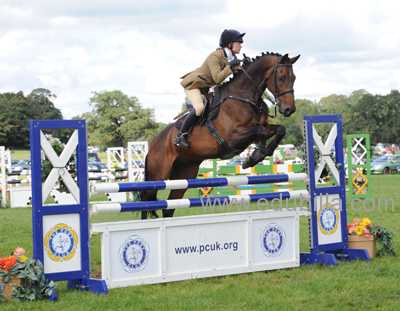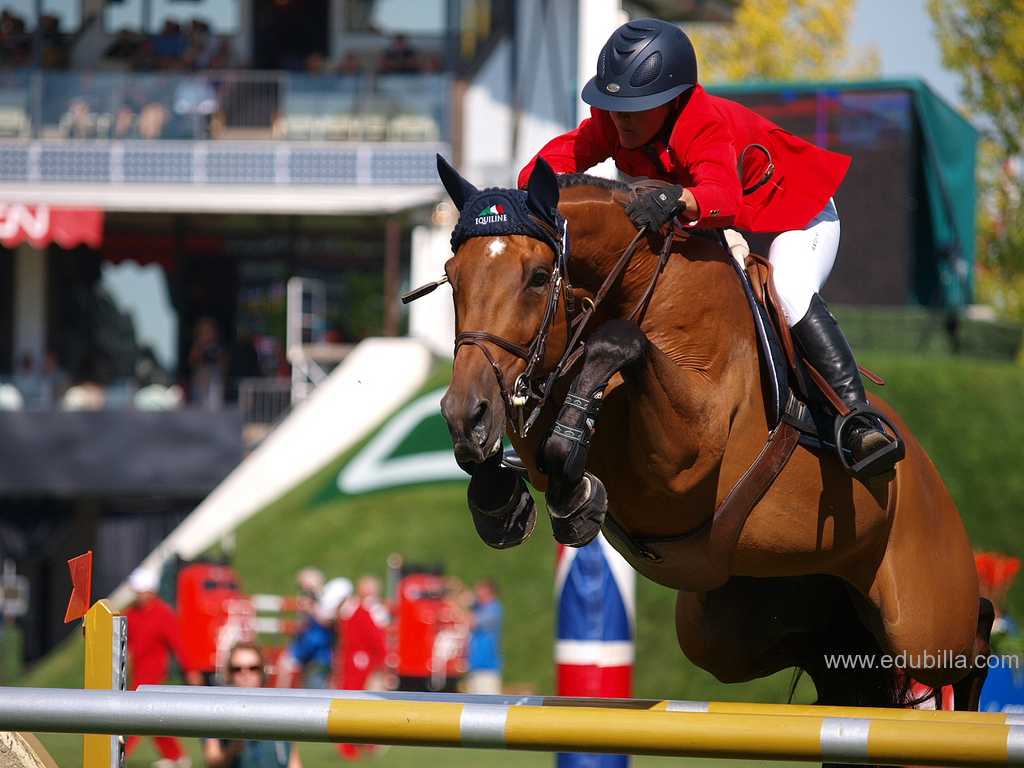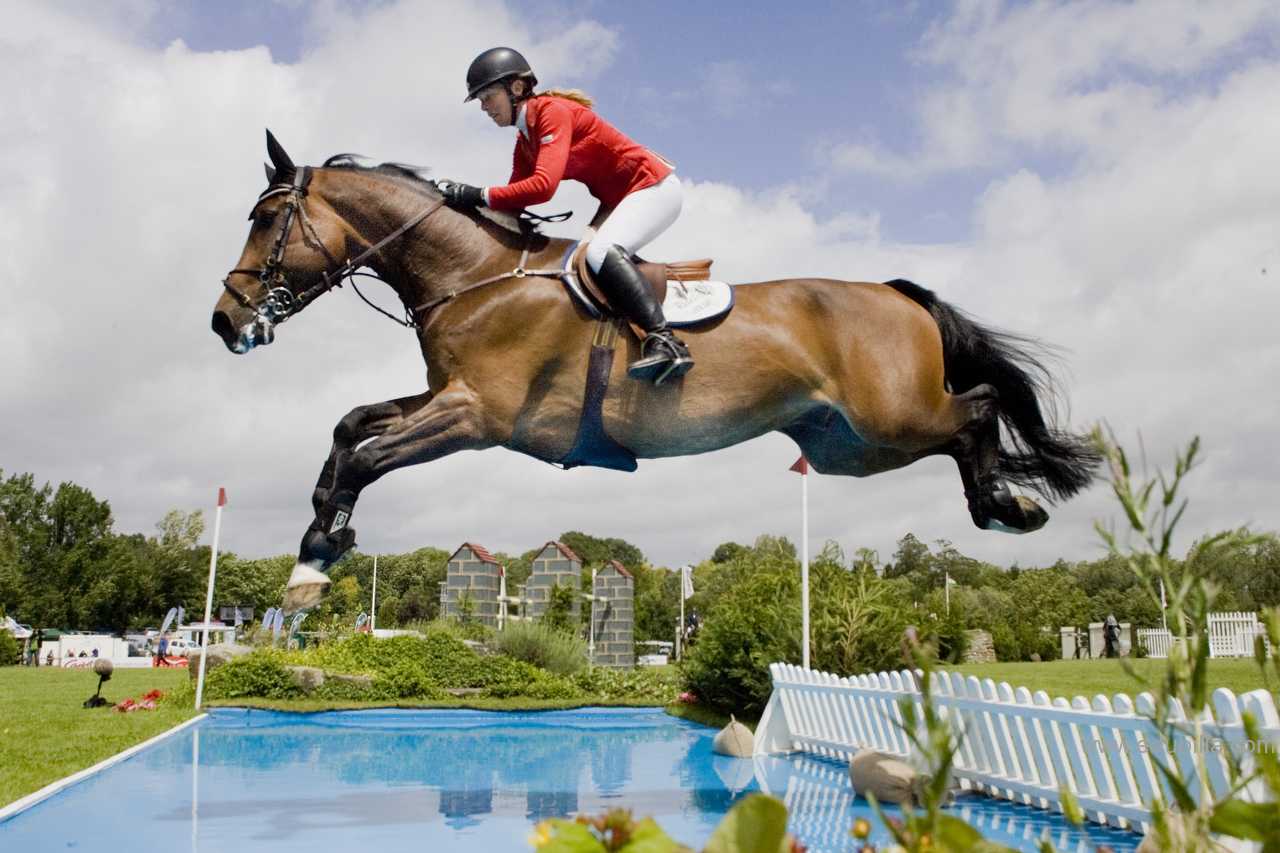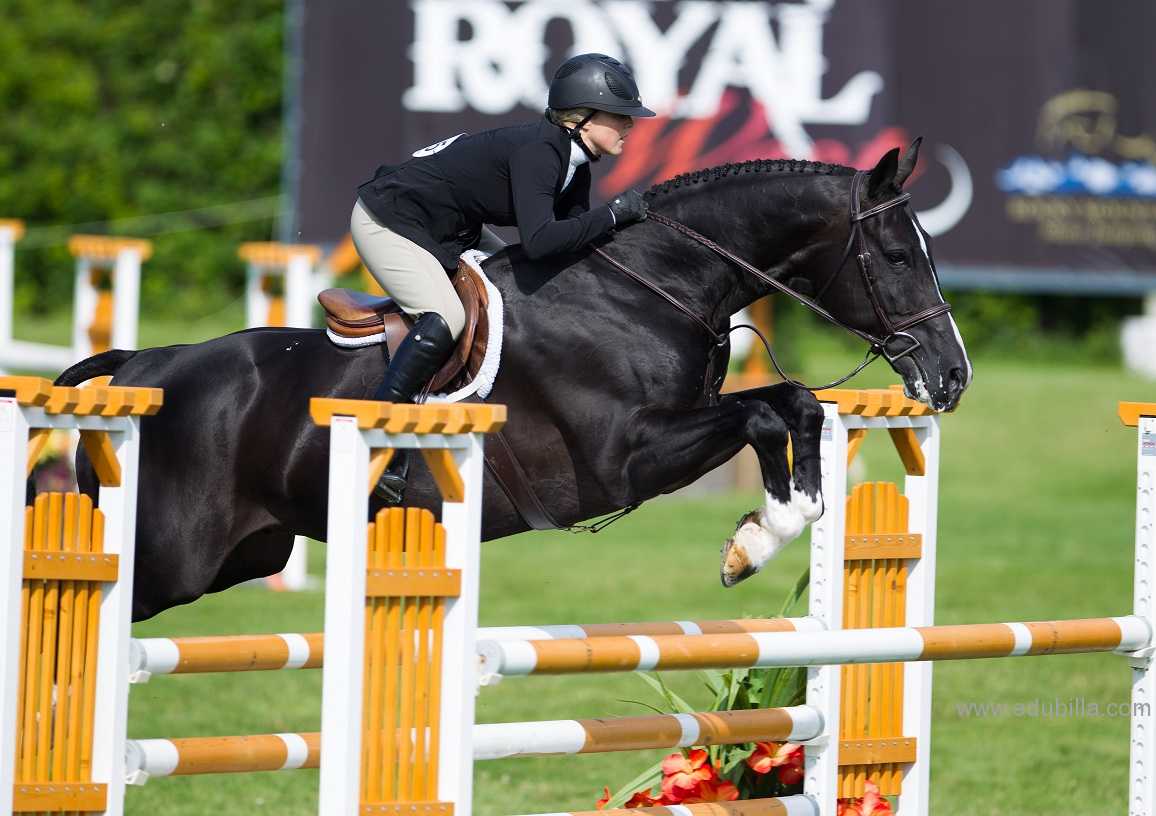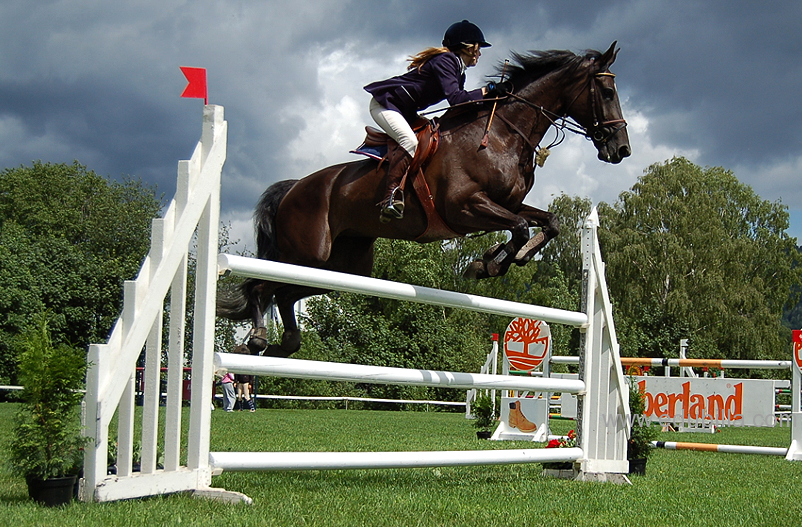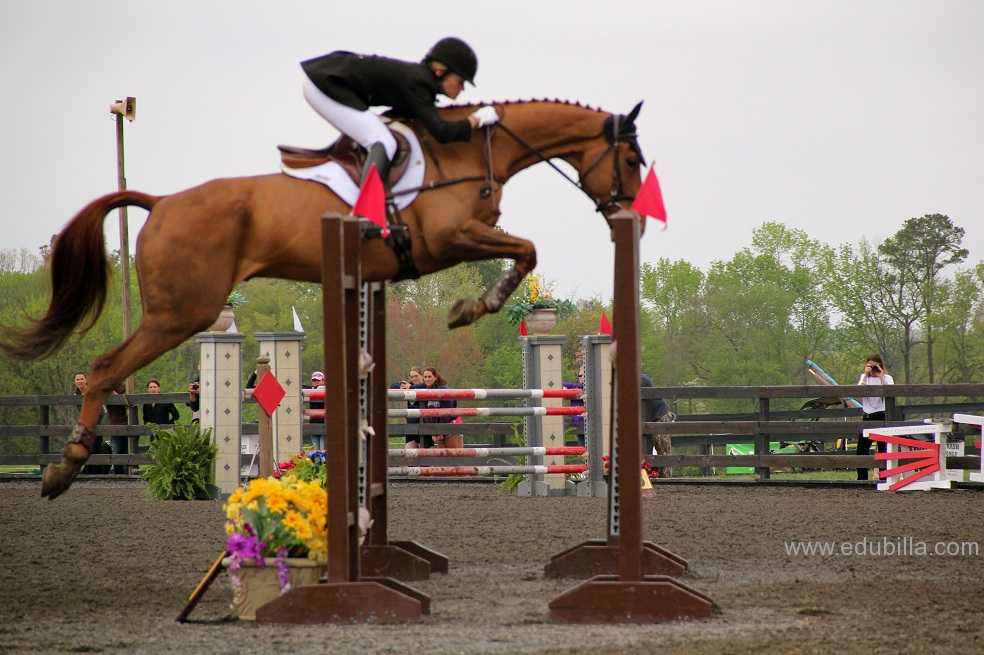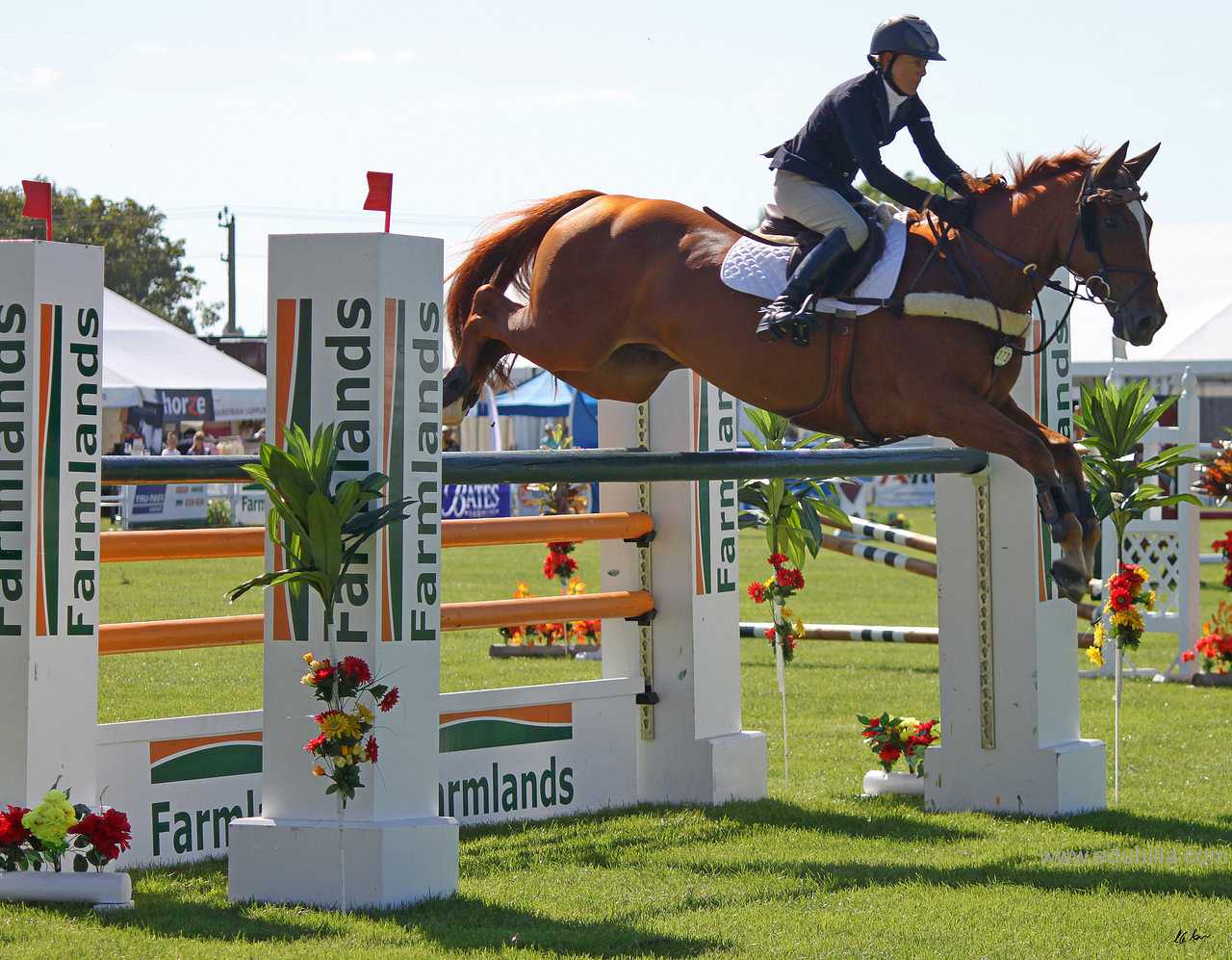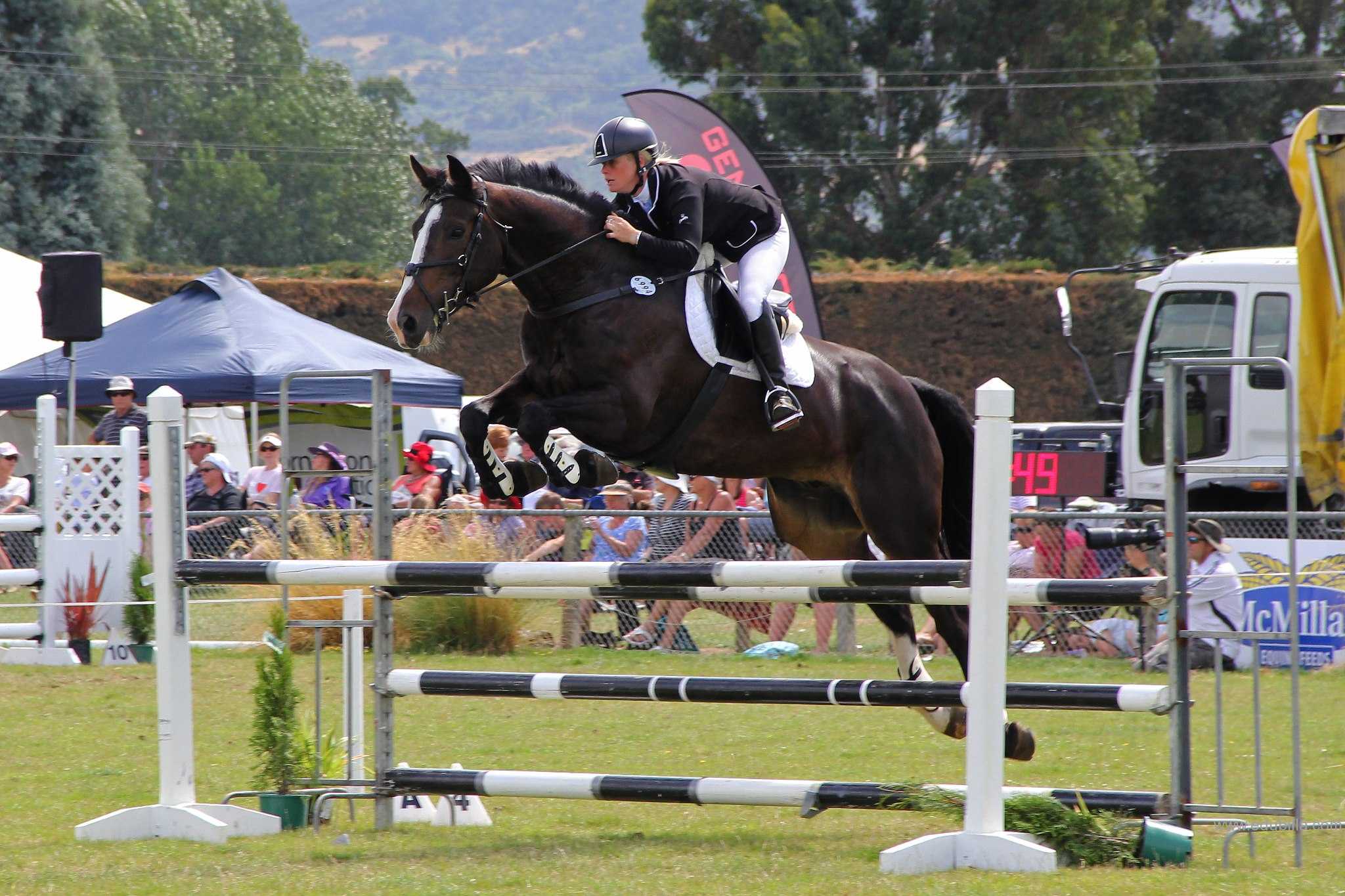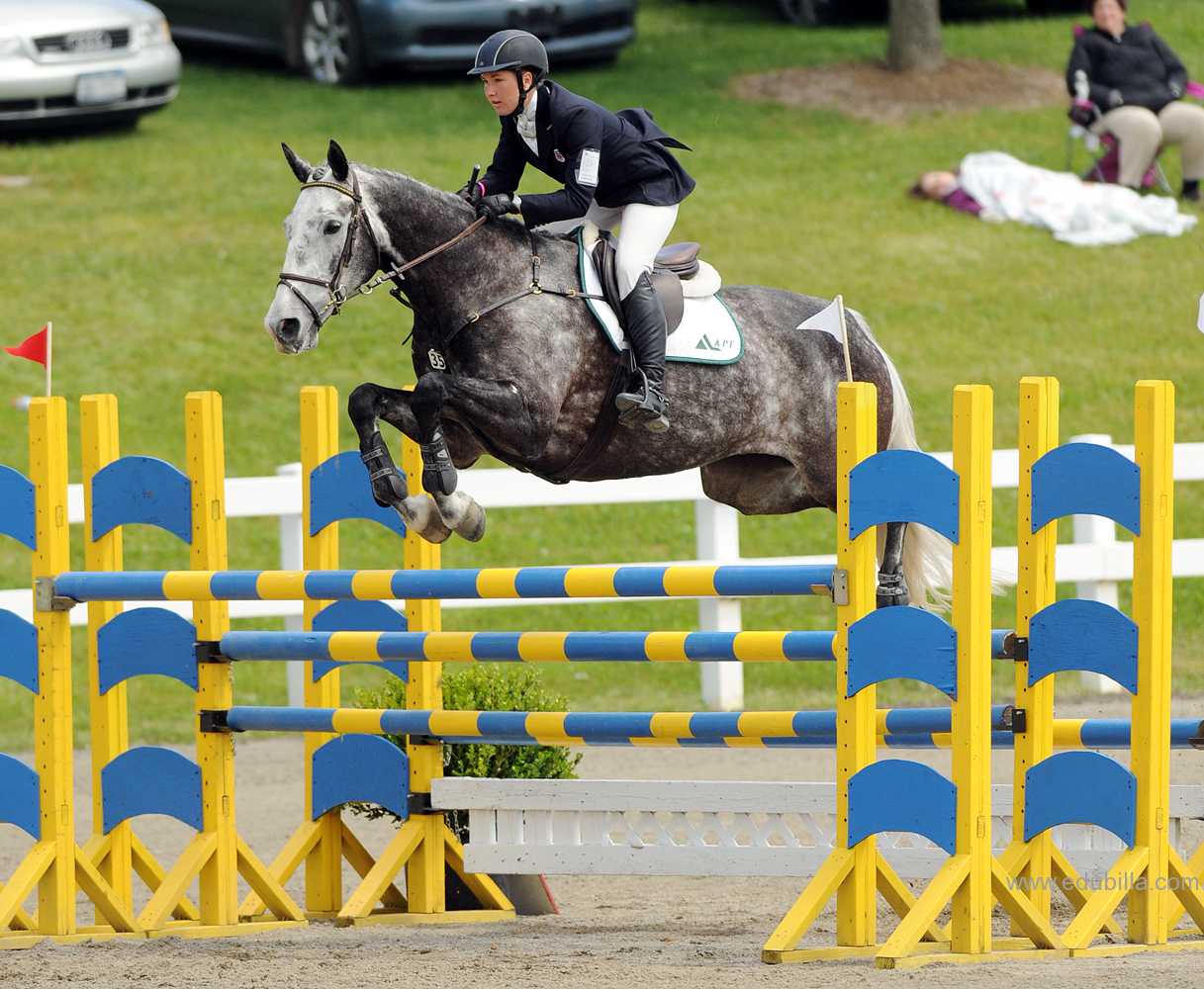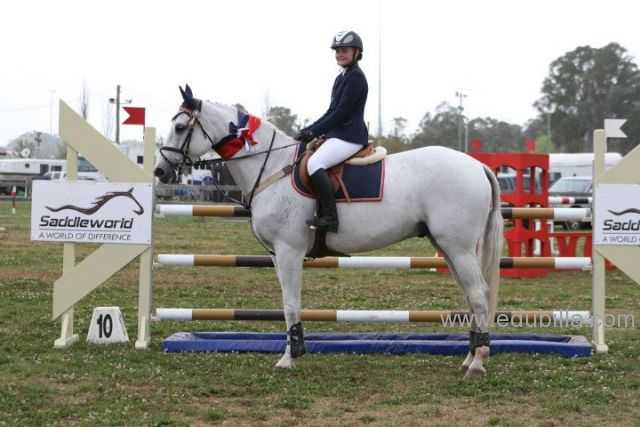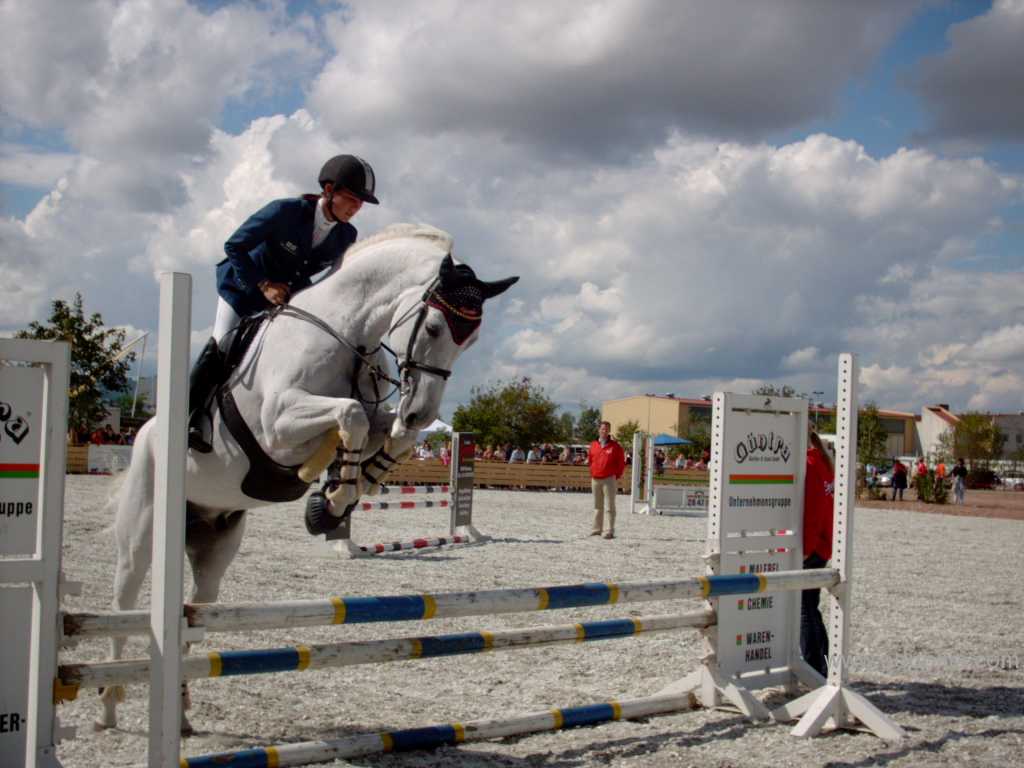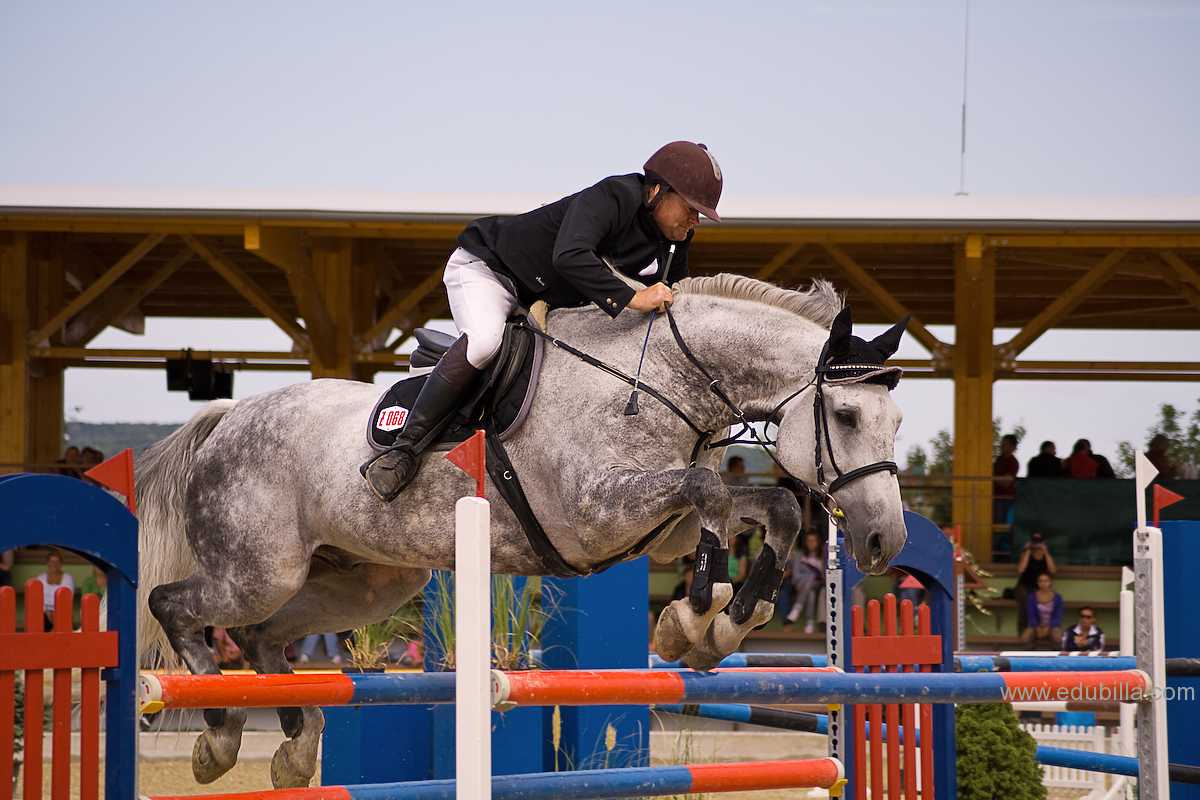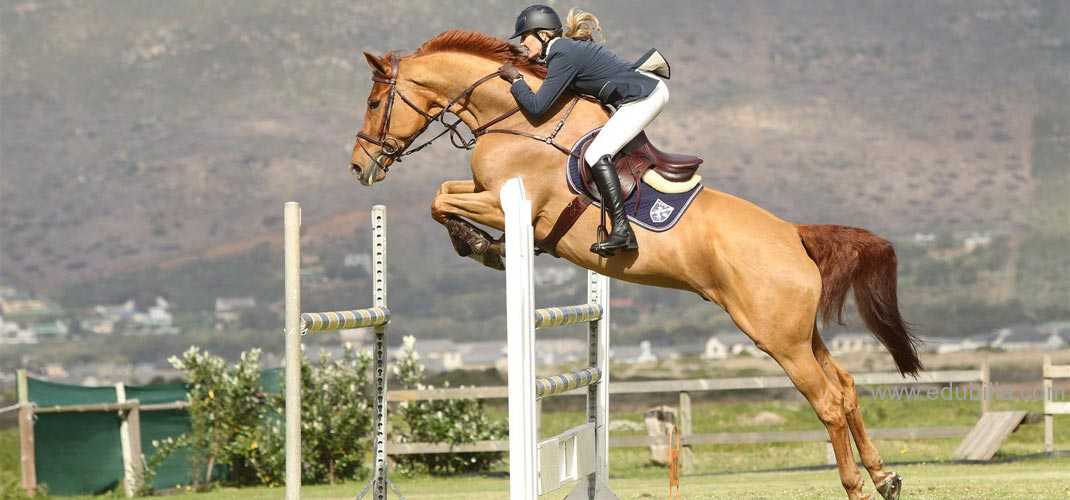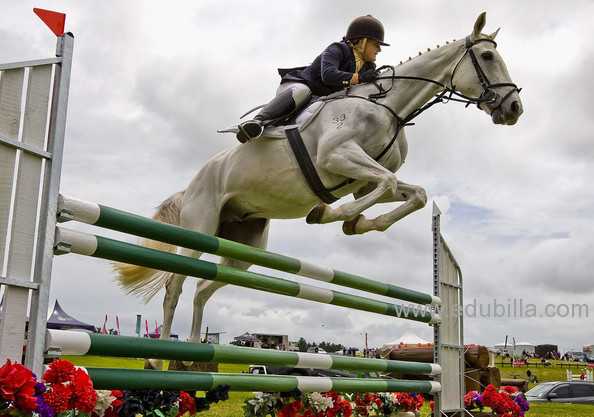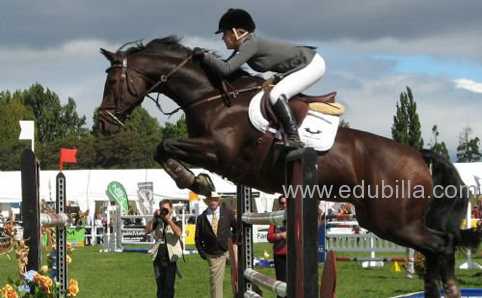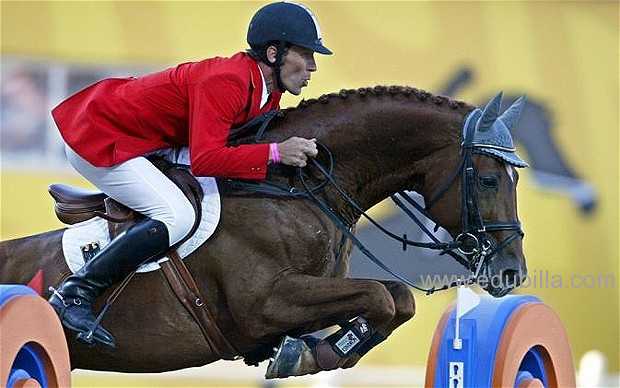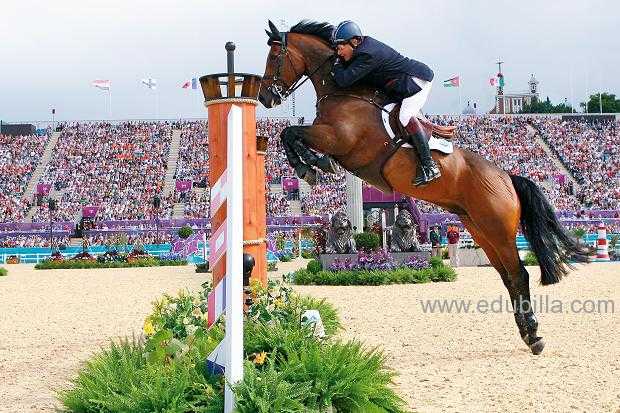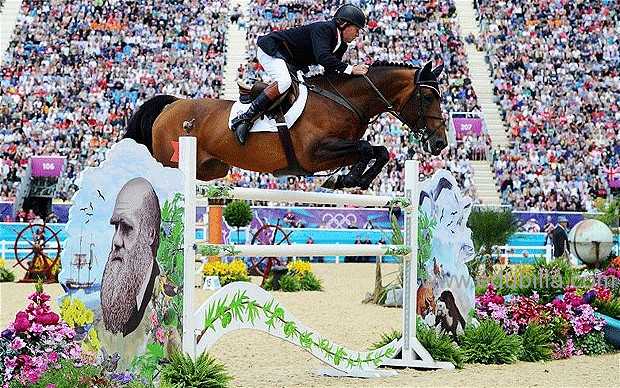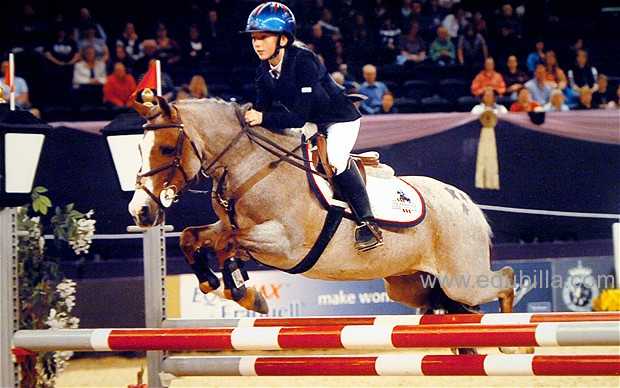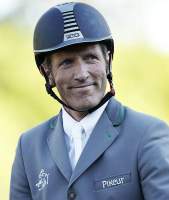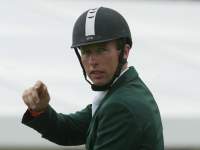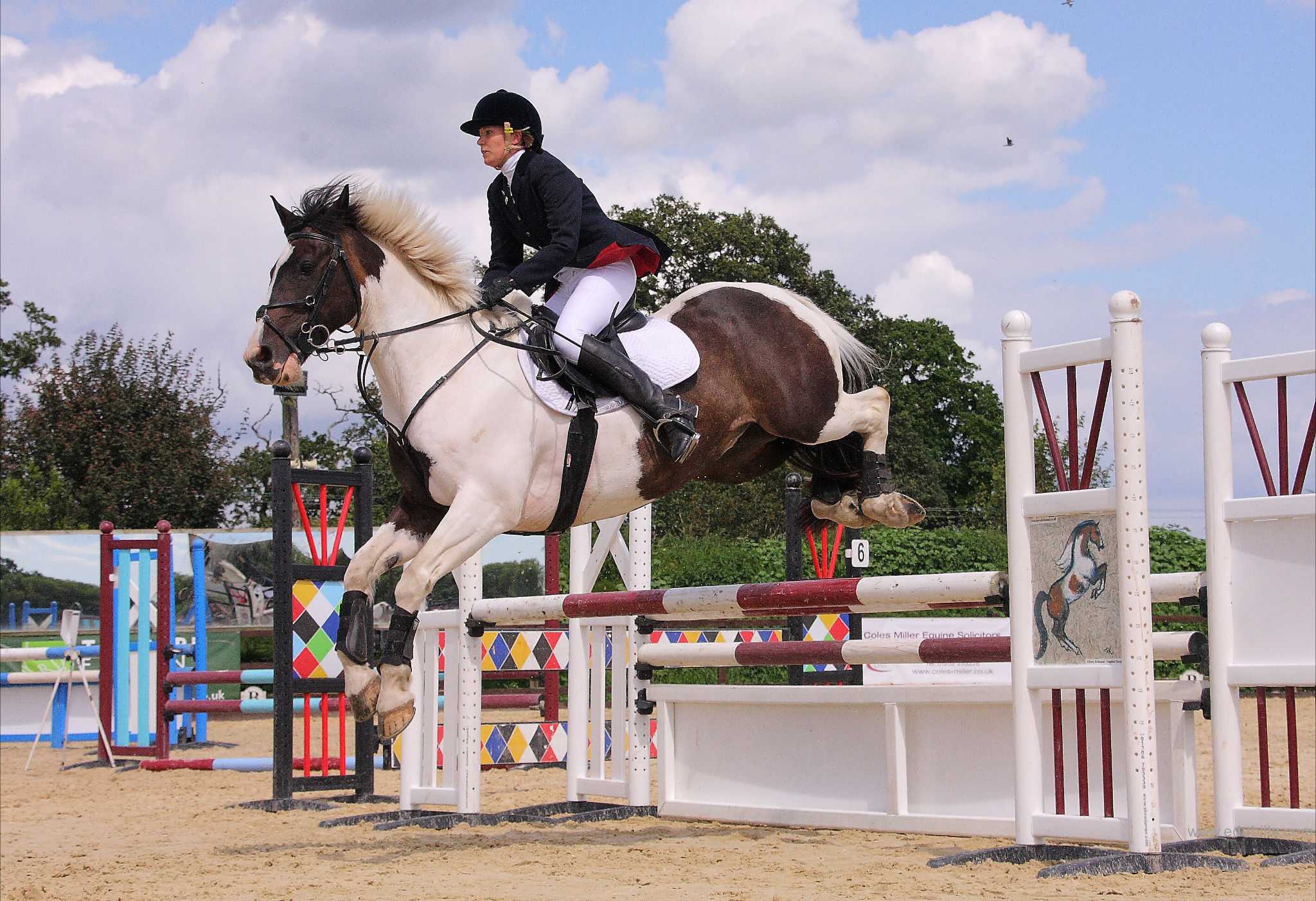
Overview Of Show jumping
Show Jumping, also known as "stadium jumping", "open jumping", or simply "jumping", is a part of a group of English riding equestrian events that also includes dressage, eventing, hunters, and equitation. Jumping classes are commonly seen at horse shows throughout the world, including the Olympics. Sometimes shows are limited exclusively to jumpers, sometimes jumper classes are offered in conjunction with other English-style events, and sometimes show jumping is but one division of very large, all-breed competitions that include a very wide variety of disciplines. Jumping classes may be governed by various national horse show sanctioning organizations, such as the United States Equestrian Federation in the USA. International competitions are governed by the rules of the International Federation for Equestrian Sports (FEI, from the body's French name of Fédération Équestre Internationale).
Types of show jumps:
Vertical (or upright) – a jump that consists of poles or planks placed one directly above another with no spread, or width, to jump
Oxer – two verticals close together, to make the jump wider, also called a spread
Triple bar – is a spread fence using three elements of graduating heights
Cross rail – not commonly used in sanctioned horse shows, and sometimes called a "cross-pole," two poles crossed with one end of each pole being on the ground and on jump standards so that the center is lower than the sides; used at small shows and for schooling purposes to help the horse jump in the center of the fence
Wall – this type of jump usually is made to resemble a brick wall, but the "bricks" are constructed of a lightweight material and fall easily when knocked
Hogsback – a type of spread fence with three rails where the tallest pole is in the center
Filler – this is not a type of fence, but is a solid part below the poles, such as flower boxes or a rolltop; it also may be a gate
Combination – usually two or three jumps in a row, with no more than two strides between each; two jumps in a row are called double combinations, and three jumps in a row are called triple combinations (if a horse refuses the second or third element in one of these combinations, they must jump the whole combination again, not just any obstacle missed)
Fan – the rails on one side of the fence are spread out by standards, making the fence take the shape of a fan when viewed from above
Open water – a wide ditch of water
Liverpool– a ditch or large tray of water under a vertical or oxer
Joker – a tricky fence comprising only a rustic (or unpainted) rail and two wings wherein the lack of filler makes it difficult for a horse to judge their proximity to the fence as well as the fence's height, making it a tricky obstacle usually found only in the upper divisions, and illegal in some competitions
The horses:
A show jumper must have the scope and courage to jump large fences as well as the athletic ability to handle the sharp turns and bursts of speed necessary to navigate the most difficult courses. Many breeds of horses have been successful show jumpers, and even some grade horses of uncertain breeding have been champions. Most show jumpers are tall horses, over 16 hands (64 inches, 163 cm), usually of Warmblood or Thoroughbred breeding, though horses as small as 14.1 hands (57 inches, 145 cm) have been on the Olympic teams of various nations and carried riders to Olympic and other international medals. There is no correlation between the size of a horse and its athletic ability, nor do tall horses necessarily have an advantage when jumping. Nonetheless, a taller horse may make a fence appear less daunting to the rider.
Ponies also compete in show jumping competitions in many countries, usually in classes limited to youth riders, defined as those under the age of 16 or 18 years, depending on the sanctioning organization. Pony-sized horses may, on occasion, compete in open competition with adult riders. The most famous example was Stroller, who only stood 14.1 hands (57 inches, 145 cm) but was nonetheless an Individual silver medal winner and part the Great Britain show jumping team in the 1968 Summer Olympics, jumping one of the few clean rounds in the competition. Significant jumpers from the United States are included in the Show Jumping Hall of Fame.
Competitions:
There are many different competitions in showjumping such as 6 bar (six jumps in a line and after each round the heights are raised), knockout stakes ( two competitors against each other over identical courses) and the puissance ( a brick wall that is raised after each clear round) and of course many other variations including speed, high jump and ride and drive.
Game Rules
- A ground jury consisting of various judges and officials and qualified according to FEI standards inspects the course and judges the competition.
- Horses must be at least 9 years old for Olympic competition.
- A bell is used to communicate with the competitor and is used to signal various events such as when they may enter the arena, a halt or continue in case of an interruption, or to indicate the rider is eliminated.
- Red or white flags are used to mark obstacles or mandatory turns.
- Jumps generally are categorized as spreads, verticals or water jumps. Jumps may be set up in combinations.
Faults and Penalties:
- Four faults are given for each jump knocked down. (A rail or one or more parts of the jump fall to the ground).
- Four faults are given if one or more hooves leave an impression on the lath surrounding a water jump.
- Four faults are given for the first disobedience (refusal to jump, run out).
- Elimination: Horse (shoulders and haunches touch the ground) or rider falls.
- Elimination: Second disobedience (refusal).
- Elimination: An uncorrected deviation from the course.
- Elimination: Exceeding the time limit.
- One penalty point for every four seconds or portion of a second exceeding the time allowed in the first and second rounds and jump-offs not against the clock.
- One penalty point for each second or portion of a second exceeding the time allowed in a jump-off against the clock.
Detailed Show jumping Rules Can Be Downloaded From Documents
Equipments Need For Show jumping
Bit
The metal mouthpiece on a bridle, to which the reins are attached.
Blinkers
The flaps on a bridle which stop a horse from seeing backwards or sideways (unauthorized in competition).
Breeches
Trousers worn specifically for riding.
Bridle
A harness that fits around a horse's head, holding the bit.
Cup
An attachment to the wing of a jump, which holds the rail in position.
Fence
1. in jumping, a vertical obstacle usually no higher than 1.6 metres but involving substantial width, constructed with colourful poles, planks, hedges, fake stone or brick, or flowers.
2. in the three-day event, a vertical obstacle usually less than 1.2 metres high and constructed with natural materials designed to fit with the terrain.
Gate
A vertical fence made with planks, balustrades, gates or other items to present a solid obstacle.
Hunting Stock
A broad band worn around a rider's neck.
Obstacle
In show jumping and the three-day event, an object a horse must clear to complete the course, such as a fence, gate or water jump.
Oxer
A single fence consisting of two elements which make a spread jump, such as parallel oxers.
Parallel Oxer
An obstacle featuring front and back rails of equal height set wide apart to produce a spread, creating a difficult jump.
Rail
In showjumping and the three-day event, a pole which makes up a part of some obstacles. SaddleThe seat for the rider on the back of a horse. Safety cupA special cup used to hold the back rail of a spread fence. This cup releases and drops the rail if the horse hits it.
Saddle
The seat for the rider on the back of a horse.
Safety Cup
A special cup used to hold the back rail of a spread fence. This cup releases and drops the rail if the horse hits it.
Spread
A show jumping obstacle with an element of width, not just height, and which is generally higher and wider than the other spread jumps.
Spur
A pointed device attached to a rider's boot heel and used to encourage a horse. VerticalAn obstacle which is difficult to jump because of its height.
Vertical
An obstacle which is difficult to jump because of its height.
Vertical fence
A straight up-and-down fence without width, creating a relatively difficult obstacle. Water jumpAn obstacle requiring a horse to jump over a wide expanse of water, usually with a low hedge or fence at the leading edge.
Water Jump
An obstacle requiring a horse to jump over a wide expanse of water, usually with a low hedge or fence at the leading edge.
Whip
A long, thin, hand-held device used to encourage a horse.
History Of Show jumping
Jumping developed after fences were put up in the English countryside, leading foxhunters to require horses that could jump.
The Enclosures Acts:
The discipline, as we know it today, developed as a result of competition among fox hunters, following the introduction of the Enclosures Acts that came into force in England in the eighteenth century. Previously, hunters would gallop across open fields in their pursuit of foxes. But when fences were erected following the Acts, a new and much desired trait took the fore - the jumping horse.
Federico Caprilli:
Many regard Italian Federico Caprilli as the “father of modern riding”, a status he earned by revolutionising the jumping seat. Before him, riders would lean back and pull the reins when jumping a fence. However this technique was awkward and uncomfortable for the horse. Caprilli’s solution was the more natural “forward seat” position. This technique is now universally used.
Olympic history:
The horse made its first appearance at the Ancient Olympic Games in 680 B.C. when chariot racing was introduced - and was by far the most exciting and spectacular event on the programme. Many centuries later. when the modern Games began, a few unsuccessful attempts, namely 1896,1900, 1904 and 1908 preceded the success of equestrian in the 1912 Olympic programme. Over the next few decades Jumping was dominated by the military, but with the mechanisation of the ,army over the years, civilians became more and more prevalent. The decline of the military teams also paved the way for women, who made their first Olmyipc appearance in Jumping at the 1956 Games in Stockholm, and today are as often if not more on the top spot of the podium.
Origin Of Show jumping
Showjumping as we see it today originated in Italy around the beginning of the 20th Century. The Italians developed the forward riding position rather than leaning back in the saddle and this made it much easier for the horse and less tiring for the rider.Glamour and excitement are two vital ingredients in any successful sport and showjumping is a sport full of action, excitement, dedication and glamour. It is a sport where men and women compete on equal terms and champions can be any age to achieve their goals.
First Competition:
The first International show jumping competition in England was at Olympia in 1907 and had mainly military personal taking part. The competition rules were very different from today's with four faults being deducted for a fence knocked down by the forelegs and two faults with the hind legs and half a fault added for touching the water jump and also for touching a fence without knocking it down. By 1912 the sport of show jumping was also included in the Olympics.
Governing Bodies
International Federation for Equestrian Sports:
The International Federation for Equestrian Sports (FEI) is the international governing body of equestrian sports.

The FEI headquarters are in Lausanne, Switzerland. An FEI code of conduct protects the welfare of the horses from physical abuse or doping.
History of FEI:
The FEI was formed in 1921 with the joining of the national organizations of Belgium (BEL), Denmark (DEN), France (FRA), Italy (ITA), Japan (JPN), Norway (NOR), Sweden (SWE) and the United States of America (USA). Today, there are 132 National Equestrian Federations affiliated with the FEI.
Events:
Olympic and Paralympic Games
FEI World Equestrian Games
World Cup:
-Dressage World Cup
-Show Jumping World Cup
-World Cup Driving
-Vaulting championships
World, continental and regional championships
To Visit FEI Click Here
Awards Related To Show jumping
Prize money:
Prize money is sometimes awarded, particularly at larger competitions. The sum varies by the placing of the rider, the prestige of the show, and the difficulty of the class. Horse Shows do not offer cash purses as large as those the Thoroughbred racing industry, though a few of the biggest show jumping, cutting and reining competitions may offer purse money into the low five figures. However, most show horses in the United States, especially those at the amateur levels, rarely win significant cash prizes during their show career. At best, a solid competitor might break even on entry fees and, if they are quite lucky, cover some travel expenses. Most money made from showing horses is indirectly earned by breeding fees paid for top horses, the sale of their offspring, or from the training fees paid to top trainers.
Trophies:
Trophies are usually awarded to the first place horse in a class, depending on the size of the show. In a championship event, trophies may be awarded to both the champion and the reserve champion, and at a national or international show, trophies are sometimes given to the top five to ten competitors.
Medals:
Medals are given at international events such as the World Equestrian Games and the Olympics. Usually only three medals, Gold, Silver, and Bronze, are awarded to the top three individuals or teams.
5 Star Award Training:
The NAF British Showjumping Five Star Award programme delivers comprehensive training and a positive structure. With a series of progressive standards, the 5 star award programme provides clear goals and competencies for all levels
Sample Documents Of Show jumping
-Sachin Tendulkar





